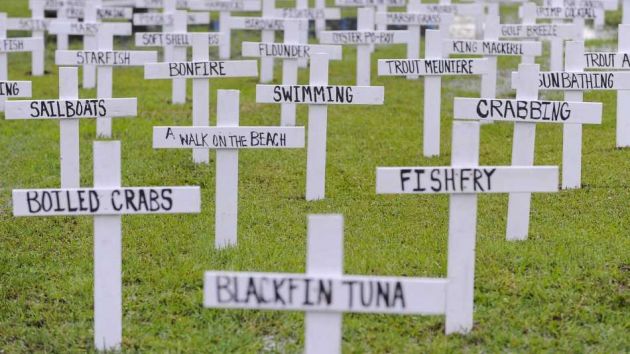Talking Story: Using narrative to bring ecology home
This post contributed by Piper Corp, ESA Science Policy Analyst
 Scientists have a lot of data. And with so many high-profile environmental policy issues, ecologists are increasingly faced with turning these data into something that makes sense not only to other scientists but to policymakers and the public. But what we’re learning from these various policy debates is that making sense is only a first step. As we have seen in the climate debate and elsewhere, decision makers often get the science, but they place other topics—the economy, social justice, local culture—ahead of it. More critical, then, is scientists’ ability to make their findings matter, and matter enough.
Scientists have a lot of data. And with so many high-profile environmental policy issues, ecologists are increasingly faced with turning these data into something that makes sense not only to other scientists but to policymakers and the public. But what we’re learning from these various policy debates is that making sense is only a first step. As we have seen in the climate debate and elsewhere, decision makers often get the science, but they place other topics—the economy, social justice, local culture—ahead of it. More critical, then, is scientists’ ability to make their findings matter, and matter enough.
Consider the Deepwater Horizon disaster. We are all familiar with the imagery, even if as we work to understand its implications. As of August 9, wildlife responders had collected 5,771 birds in the Gulf of Mexico, 3,902 of which were already dead (full report here). Roughly 100,000 birds died as a result of the Exxon Valdez spill. The average person (and I’m no exception)  might struggle to make sense of these numbers. Most people probably don’t know the stats at all, but they have likely seen—and been impacted by—photos of oil-covered pelicans. These are the images that resonate with us, the ones that we connect with on more than an analytical level and that make a disaster, however spatially removed, hit home. The oil gusher could have killed a fraction of the birds it did, but the images would brand it as a disaster nonetheless. (While emotionally imploring, the photos undoubtedly owe some of their weight to associations with Exxon Valdez—a story that is already established in public memory.)
might struggle to make sense of these numbers. Most people probably don’t know the stats at all, but they have likely seen—and been impacted by—photos of oil-covered pelicans. These are the images that resonate with us, the ones that we connect with on more than an analytical level and that make a disaster, however spatially removed, hit home. The oil gusher could have killed a fraction of the birds it did, but the images would brand it as a disaster nonetheless. (While emotionally imploring, the photos undoubtedly owe some of their weight to associations with Exxon Valdez—a story that is already established in public memory.)
 So it makes sense that conversations on science communication have been consistently returning to the idea of storytelling—of discussing data in a way that illuminates and illustrates its role in people’s lives. One of this year’s ESA Graduate Student Policy Award (GSPA) winners, University of Hawaii-Hilo student Colin Phifer, spoke to this approach in a recent edition of The Ecologist Goes to Washington (EGWASH), the Ecological Society of America’s policy podcast:
So it makes sense that conversations on science communication have been consistently returning to the idea of storytelling—of discussing data in a way that illuminates and illustrates its role in people’s lives. One of this year’s ESA Graduate Student Policy Award (GSPA) winners, University of Hawaii-Hilo student Colin Phifer, spoke to this approach in a recent edition of The Ecologist Goes to Washington (EGWASH), the Ecological Society of America’s policy podcast:
Here in Hawaii, one of the expressions that we always use is we ‘talk story.’ And talk story means you’re getting to know one another. You’re stopping to interact and to listen and to really just share something of yourself with someone else. And so when I work with children and adults—not just here in Hawaii but in other places—one of the things I really try to get across is a sense of place. I think one of the side effects of the environmental movement over its history is that people have the sense that the environment is something out there—it’s not where they are here. Because of that, I think people don’t necessarily understand the investment or the need for conservation, for care, for stewardship where they live in their own home communities. So I really try to find something that connects with them directly, personally, and then weave them into that.
Phifer, a former creative writing major uses his knack for storytelling to get people excited about science. He has spent years as an environmental educator, telling what he calls “the stories of science” to people of all ages, backgrounds and interests. “Stories,” he said in the podcast, “is an apt description for science; finding connections with the audience where listeners are part of the story leads them to a place of understanding.” As a GSPA recipient, Phifer traveled to Washington, DC to talk with his congressional delegation about the importance of basic research. Thousands of miles away from Hawaii, he worked to make science there more relevant to congressional staffers by talking about how their efforts on Capitol Hill both benefit and benefit from projects at his university and the surrounding community.
What does the science say about stories? A 2007 study found that charity ads telling the story of a single hungry child were considerably more successful than those providing statistics on child hunger, staggering though the numbers were. Even more surprising is what happened when study participants were shown an ad featuring both the story and the statistics: They donated more on average than individuals in the statistics-only group, but less than those in the story-only group. Possible explanations abound, but the fact remains: Engaging stories and images move people to action.
Is quantification dead? Hardly. Scientists might read the preceding paragraph with some discomfort, immediately clicking the hyperlink to look for some stats. When it comes to the economy (as most things seem to), numbers are all that count. Congressional staff frequently ask for metrics—dollars saved or jobs created—that they can relay to their bosses. But in these senses, statistics are themselves a kind of story, and one that matters to the audience at hand.
So what exactly does it mean to “talk story,” and what can scientists draw from it? According to the Ukulele Guild of Hawaii:
Talk Story (‘olelo Kama’ilio) is sharing ideas, stories, history and opinions. It is two or more people taking the time out of the day to slow down and talk. In Hawai’i it is just the normal way of interacting with our neighbors.
Perhaps the most important part of this definition is its assumption that “to talk” means “to exchange.” Ostensibly a no-brainer, but then we all know what it’s like to be talked at. Crafting a story, like analyzing data, has everything to do with discretion. It is a matter of finding salience, whether in a mass of measurements or experience, and of doing so with an ear for what matters—not just to the narrator but to the audience. Storytelling is not about telling after all; it is about exchange.